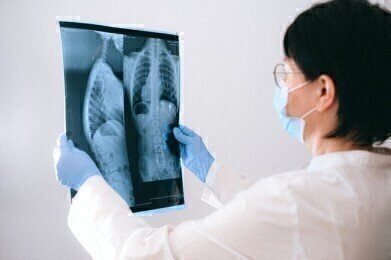News
How Are BAL Samples Processed?
Sep 24 2021
Bronchoalveolar lavage (BAL) samples offer doctors valuable insight into the state of the lungs. Usually sourced during a bronchoscopy procedure, BAL samples are collected by washing the airways with a saline solution and capturing fluid during the process. Once collected, it’s important to adhere to best-practice processing techniques to maintain the integrity of samples and improve the reliability of test results. Read on to find out more about how BAL samples are processed, and the different techniques used.
BAL sample storage
Time is of the essence, with experts recommending BAL fluid samples be processed as quickly as possible. To maintain the quality of samples and protect cell viability, many collection centres store samples at 4° C before they undergo processing. Like all samples, BAL fluid should be clearly labelled and handled with care.
Filtering and purifying BAL samples
In some cases, it’s necessary to filter BAL samples prior to processing. While this allows lab technicians to remove contaminants such as mucus plugs, it can also affect the diagnostic quality of the sample by filtering out microorganisms and cells. These sorts of contaminants can also contain valuable diagnostic information, meaning laboratories should carefully consider if filtration is necessary when processing BAL samples.
Semiquantitative culture techniques can be helpful when processing BAL samples as they can bypass contaminants secreted by the oropharynx. As well as cultures, other analytical techniques such as polymerase chain reaction (PCR) and staining can be used to detect pathogens.
Choosing what techniques to use
The origin of the sample is important as processing techniques can vary between children and adults. Availability of equipment and technologies, as well as the personal preferences of doctors and laboratory staff, can also come into play when processing BAL samples.
Advancing research with biobanks
While BAL samples are used to detect pathogens and diagnose individual patients, they’re also valuable resources for small pharmaceutical and biotechnology companies. Stored in repositories called biobanks, these sorts of clinical samples play a critical role in advancing research and fast-tracking the development of new therapies, diagnostic tests and vaccines. Unfortunately, clinical samples like BAL can be difficult to secure, especially for small and independent companies.
Biosample Hub founder Robert Hewitt is aiming to address the issue with a purpose-built platform designed to connect small biotechnology companies with reliable, high quality samples. Find out more about the project and how it’s revolutionising how companies secure clinical samples in ‘The challenges of biosample access and what needs to change.
Digital Edition
Lab Asia Dec 2025
December 2025
Chromatography Articles- Cutting-edge sample preparation tools help laboratories to stay ahead of the curveMass Spectrometry & Spectroscopy Articles- Unlocking the complexity of metabolomics: Pushi...
View all digital editions
Events
Jan 21 2026 Tokyo, Japan
Jan 28 2026 Tokyo, Japan
Jan 29 2026 New Delhi, India
Feb 07 2026 Boston, MA, USA
Asia Pharma Expo/Asia Lab Expo
Feb 12 2026 Dhaka, Bangladesh



















